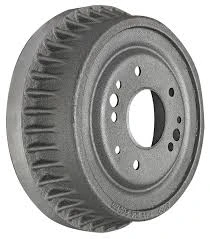
-
 Afrikaans
Afrikaans -
 Albanian
Albanian -
 Amharic
Amharic -
 Arabic
Arabic -
 Armenian
Armenian -
 Azerbaijani
Azerbaijani -
 Basque
Basque -
 Belarusian
Belarusian -
 Bengali
Bengali -
 Bosnian
Bosnian -
 Bulgarian
Bulgarian -
 Catalan
Catalan -
 Cebuano
Cebuano -
 Corsican
Corsican -
 Croatian
Croatian -
 Czech
Czech -
 Danish
Danish -
 Dutch
Dutch -
 English
English -
 Esperanto
Esperanto -
 Estonian
Estonian -
 Finnish
Finnish -
 French
French -
 Frisian
Frisian -
 Galician
Galician -
 Georgian
Georgian -
 German
German -
 Greek
Greek -
 Gujarati
Gujarati -
 Haitian Creole
Haitian Creole -
 hausa
hausa -
 hawaiian
hawaiian -
 Hebrew
Hebrew -
 Hindi
Hindi -
 Miao
Miao -
 Hungarian
Hungarian -
 Icelandic
Icelandic -
 igbo
igbo -
 Indonesian
Indonesian -
 irish
irish -
 Italian
Italian -
 Japanese
Japanese -
 Javanese
Javanese -
 Kannada
Kannada -
 kazakh
kazakh -
 Khmer
Khmer -
 Rwandese
Rwandese -
 Korean
Korean -
 Kurdish
Kurdish -
 Kyrgyz
Kyrgyz -
 Lao
Lao -
 Latin
Latin -
 Latvian
Latvian -
 Lithuanian
Lithuanian -
 Luxembourgish
Luxembourgish -
 Macedonian
Macedonian -
 Malgashi
Malgashi -
 Malay
Malay -
 Malayalam
Malayalam -
 Maltese
Maltese -
 Maori
Maori -
 Marathi
Marathi -
 Mongolian
Mongolian -
 Myanmar
Myanmar -
 Nepali
Nepali -
 Norwegian
Norwegian -
 Norwegian
Norwegian -
 Occitan
Occitan -
 Pashto
Pashto -
 Persian
Persian -
 Polish
Polish -
 Portuguese
Portuguese -
 Punjabi
Punjabi -
 Romanian
Romanian -
 Russian
Russian -
 Samoan
Samoan -
 Scottish Gaelic
Scottish Gaelic -
 Serbian
Serbian -
 Sesotho
Sesotho -
 Shona
Shona -
 Sindhi
Sindhi -
 Sinhala
Sinhala -
 Slovak
Slovak -
 Slovenian
Slovenian -
 Somali
Somali -
 Spanish
Spanish -
 Sundanese
Sundanese -
 Swahili
Swahili -
 Swedish
Swedish -
 Tagalog
Tagalog -
 Tajik
Tajik -
 Tamil
Tamil -
 Tatar
Tatar -
 Telugu
Telugu -
 Thai
Thai -
 Turkish
Turkish -
 Turkmen
Turkmen -
 Ukrainian
Ukrainian -
 Urdu
Urdu -
 Uighur
Uighur -
 Uzbek
Uzbek -
 Vietnamese
Vietnamese -
 Welsh
Welsh -
 Bantu
Bantu -
 Yiddish
Yiddish -
 Yoruba
Yoruba -
 Zulu
Zulu
car brake drum problems
Understanding Car Brake Drum Problems
Car braking systems are crucial for vehicle safety, and the brake drum is a key component in drum brake systems. While brake drums are designed to last, they can encounter various problems that affect their performance. Understanding these issues can help drivers maintain their vehicles effectively and ensure safer driving experiences.
Common Brake Drum Problems
1. Warping One of the most common problems with brake drums is warping. This occurs when the drum becomes distorted due to extreme heat generated during braking. Heavy braking, driving downhill, or prolonged use can lead to this overheating. Warped drums can result in a pulsating sensation when the brakes are applied, diminishing the effectiveness of the braking system.
2. Cracks Over time, frequent heating and cooling cycles can cause brake drums to develop cracks. These cracks can occur due to material fatigue or from overheating. A cracked drum can compromise the integrity of the entire braking system, leading to dangerous situations where the brakes may fail entirely.
3. Surface Wear The brake drum surface can wear down over time, leading to a reduction in braking efficiency. This wear can be caused by the friction between the brake shoes and the drum. If not addressed, worn drums can lead to uneven brake application, which may affect vehicle control.
4. Glazing Glazing occurs when the brake drum surface becomes smooth and shiny due to excessive heat. This can happen if the brakes are used too aggressively or if the brake pads are of inferior quality. Glazed drums can reduce friction, leading to longer stopping distances and potential safety issues.
5. Improper Installation Brake drums need to be installed correctly to function effectively. If they are not aligned properly, it can lead to uneven wear and poor braking performance. Drivers may experience dragging brakes, which can cause the drums to overheat and wear out more quickly.
car brake drum problems

Signs of Brake Drum Issues
Drivers should be aware of several warning signs that may indicate brake drum problems. These include unusual noises (such as grinding or squeaking), vibrations during braking, reduced stopping power, and warning lights on the dashboard. If any of these symptoms occur, it is essential to have the braking system inspected by a qualified technician.
Maintenance and Prevention
Preventative maintenance is key to avoiding brake drum problems. Regularly checking your vehicle's braking system, including the drums, shoes, and fluid, can help identify potential issues before they become serious. It’s also advisable to follow the manufacturer’s recommendations regarding brake inspection and replacement intervals.
Additionally, maintaining a steady driving style by avoiding abrupt stops and aggressive braking can extend the lifespan of the brake drums. If you frequently drive in hilly or mountainous areas, consider using engine braking to reduce the strain on the braking system.
Conclusion
Brake drum problems can significantly impact vehicle safety and performance. By understanding the common issues associated with brake drums, recognizing the warning signs, and committing to regular maintenance, drivers can ensure that their braking systems operate reliably. Remember, the brakes are one of the most critical components of your vehicle, and keeping them in optimal condition is essential for safe driving.
-
What Are Drum BrakesNewsJul.07,2025
-
Understanding Brake Drum MaterialNewsJul.07,2025
-
Semi-Trailer Brake Drum: A Key Component for Extreme Loads and Long-Distance TransportNewsJul.07,2025
-
Drum Brake Pads for SaleNewsJul.07,2025
-
Brake Drums for SaleNewsJul.07,2025
-
Brake Drum ManufacturerNewsJul.07,2025
-
Aluminum Brake Drums: The Future of High-Performance CarsNewsJul.07,2025
